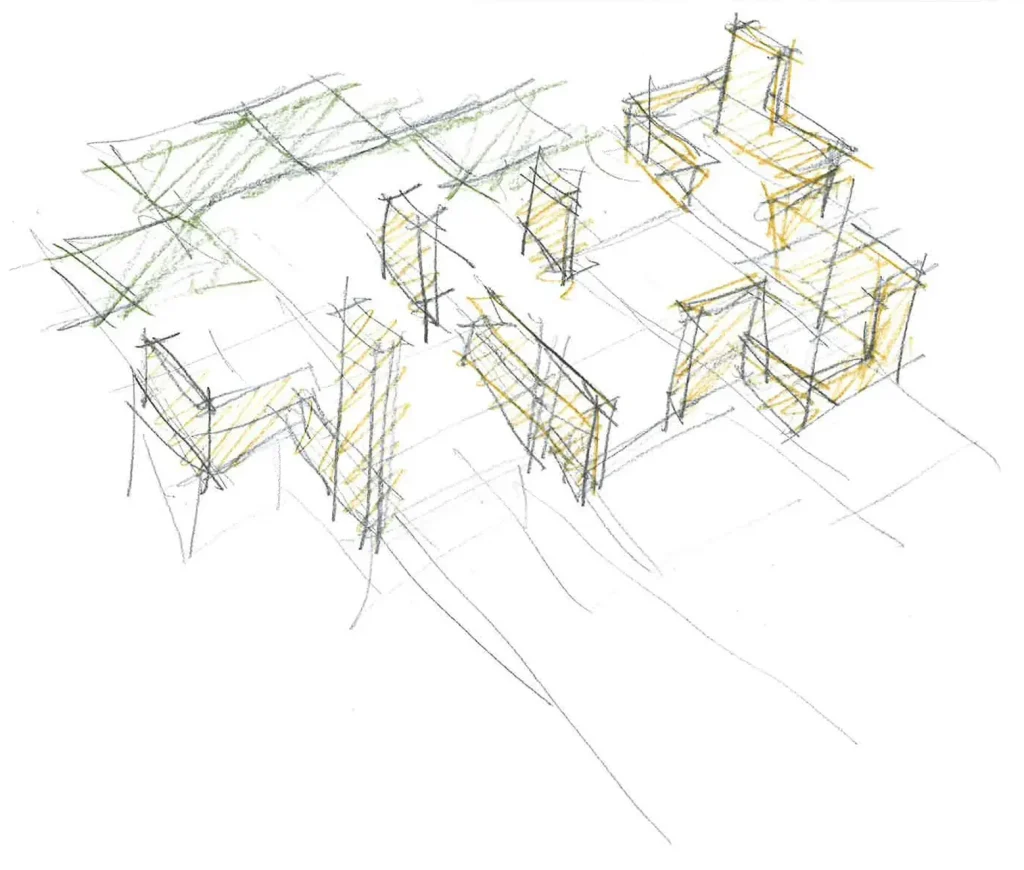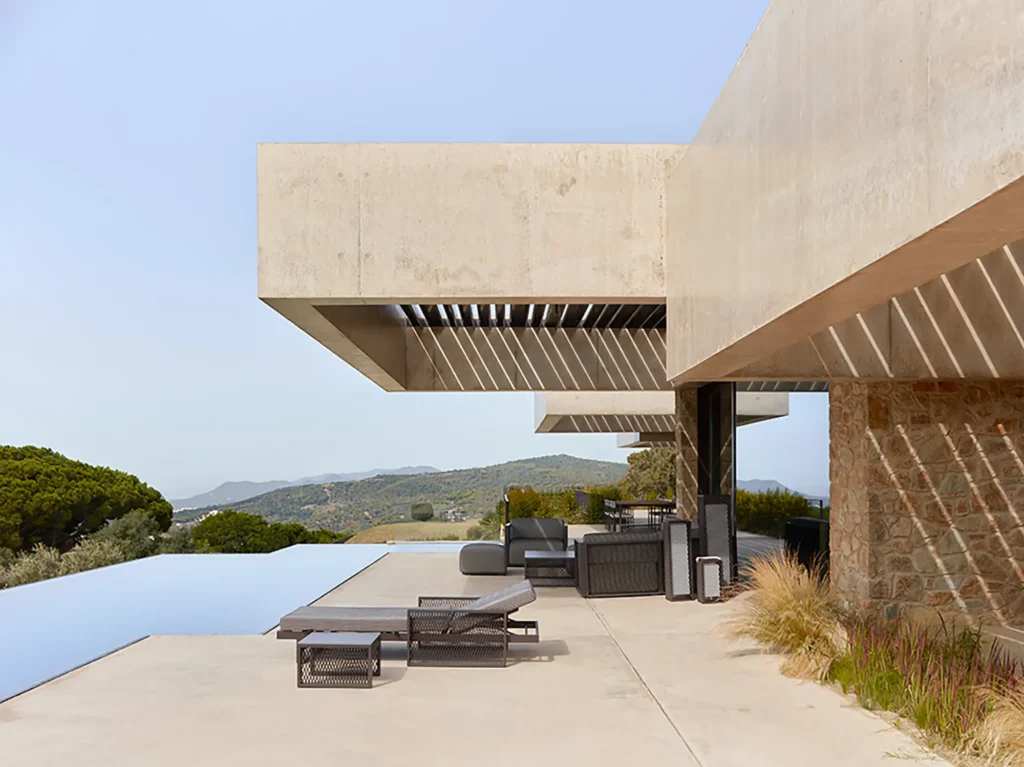The house recalls the local vernacular architecture by adapting the stone plinths of the nearby dwellings. The different pieces of the house have a stonework plinth that is higher or lower depending on the proportions of the piece and its openings.
Each piece protrudes out of the attached one in order to articulate a layout that try to generate different views of the garden and set spatial and visual links between them. Their height depends on the use of the room that they host. The set is topped by a lookout piece that opens to the distant views of the city.
A fluid and varying interior is generated by this play on composition, thus providing a different perception of each room caused by the variation of the proportions of the pieces and openings. The openings are sized and placed according to the sights that they aim to, while the façades are thoroughly designed for creating a balanced composition that integrates these various openings and the duality of materials.
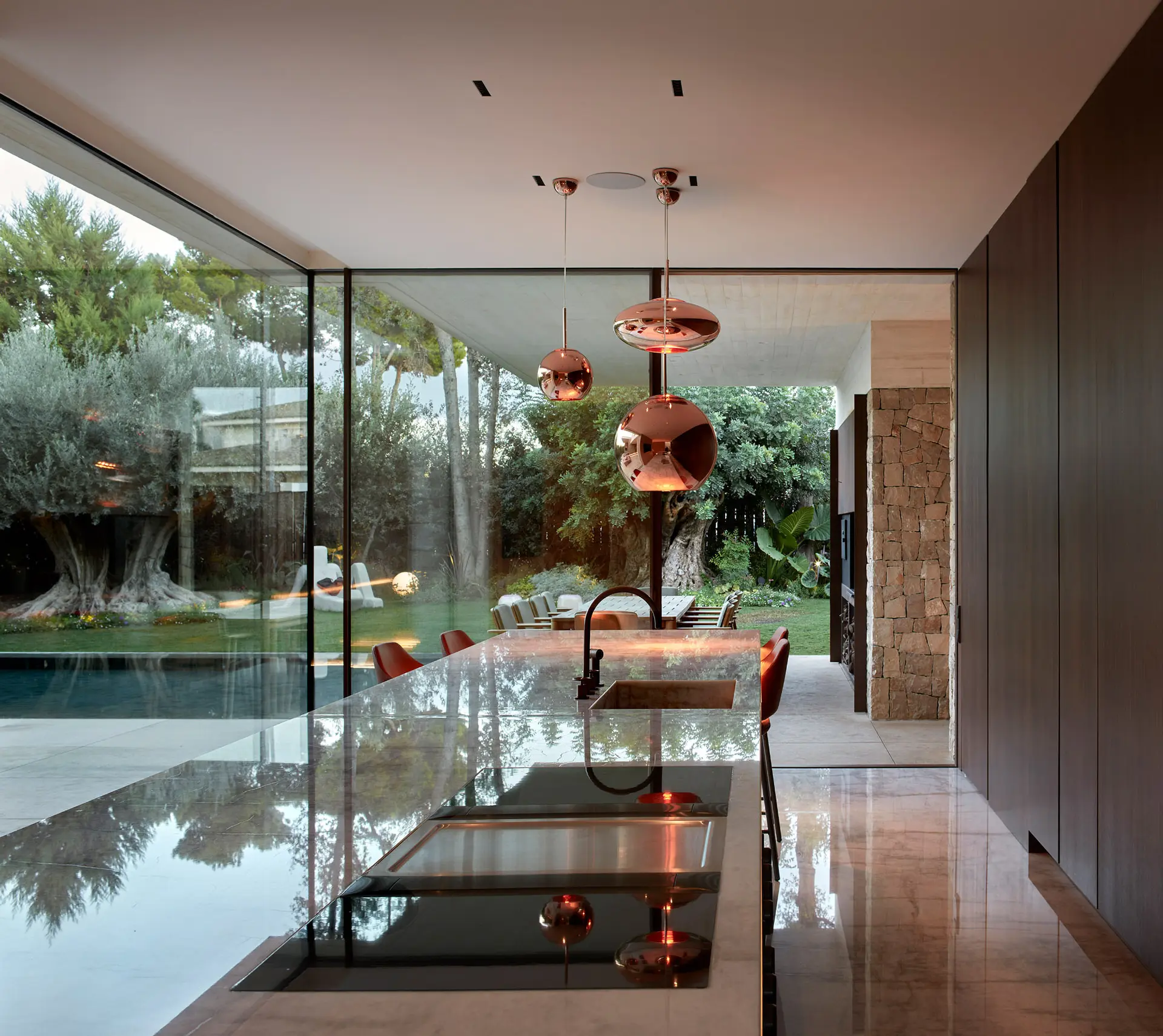
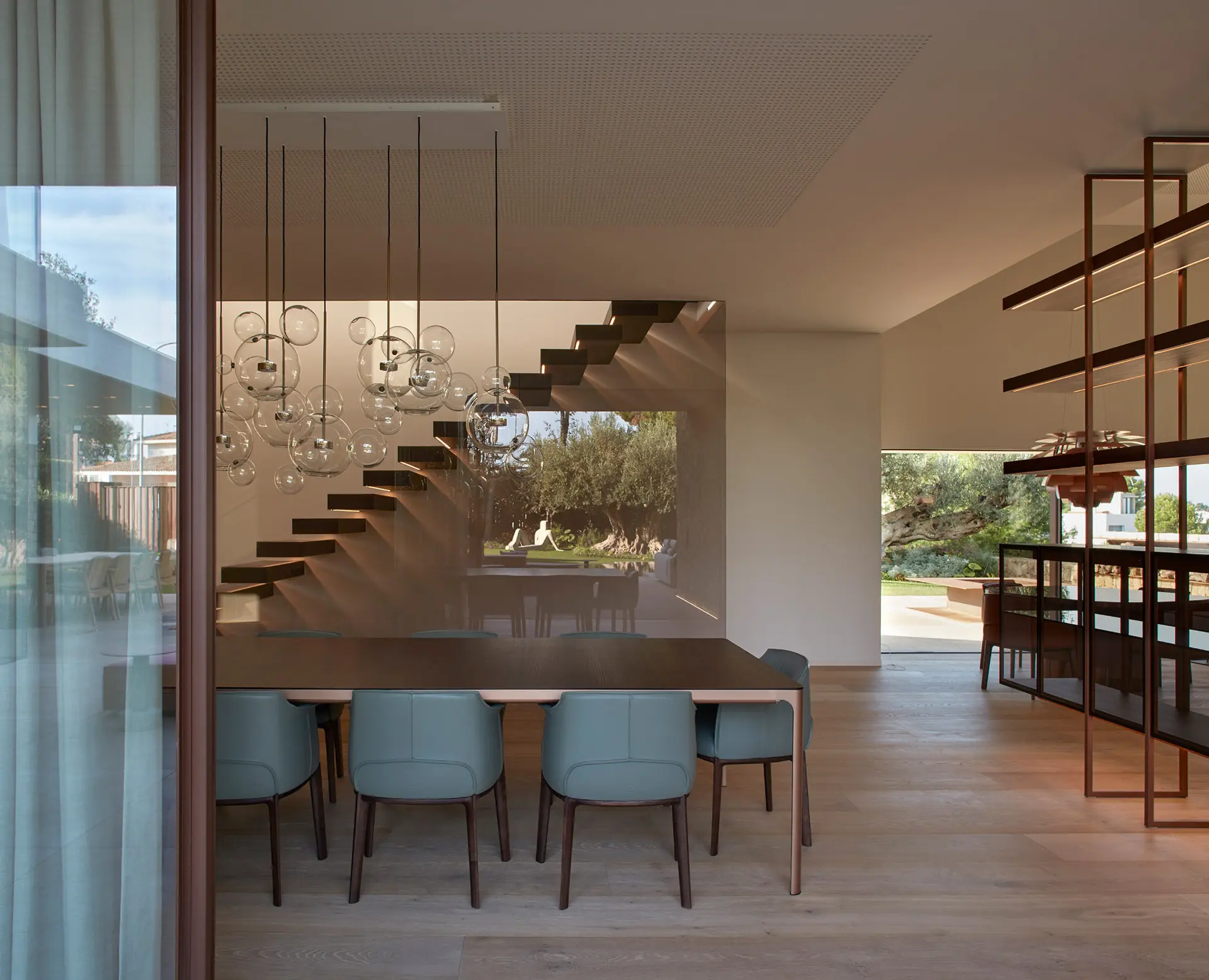

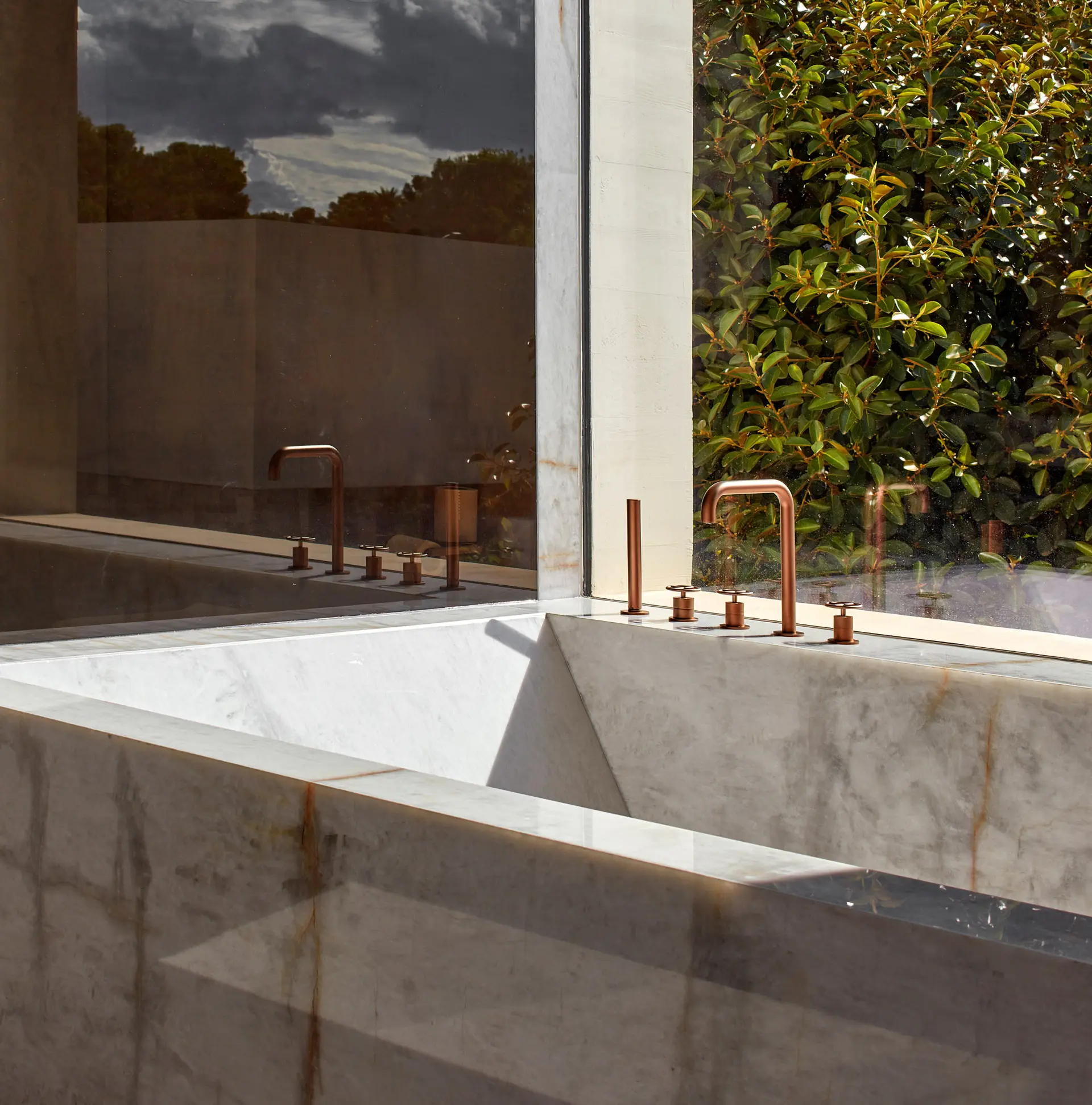
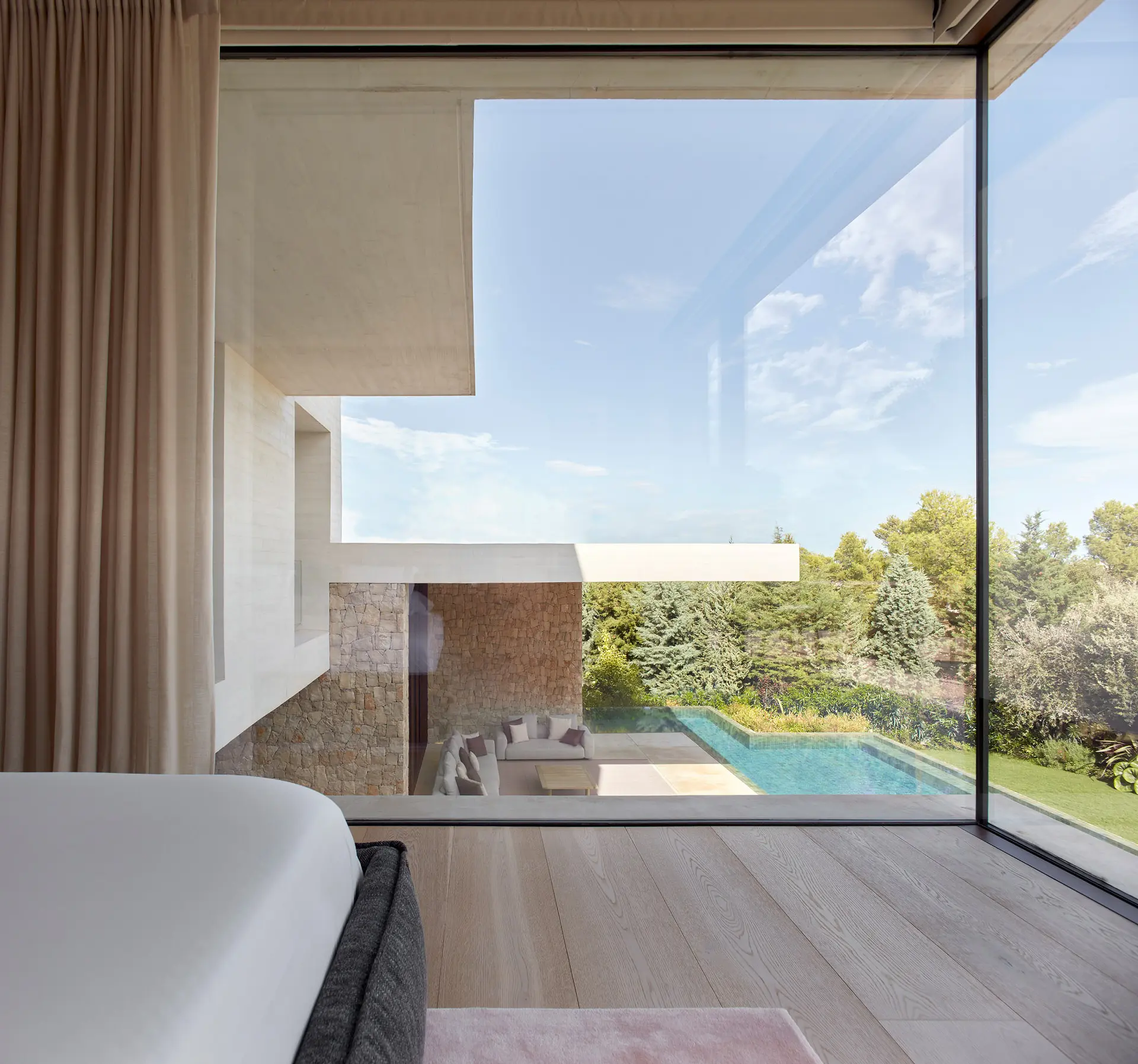
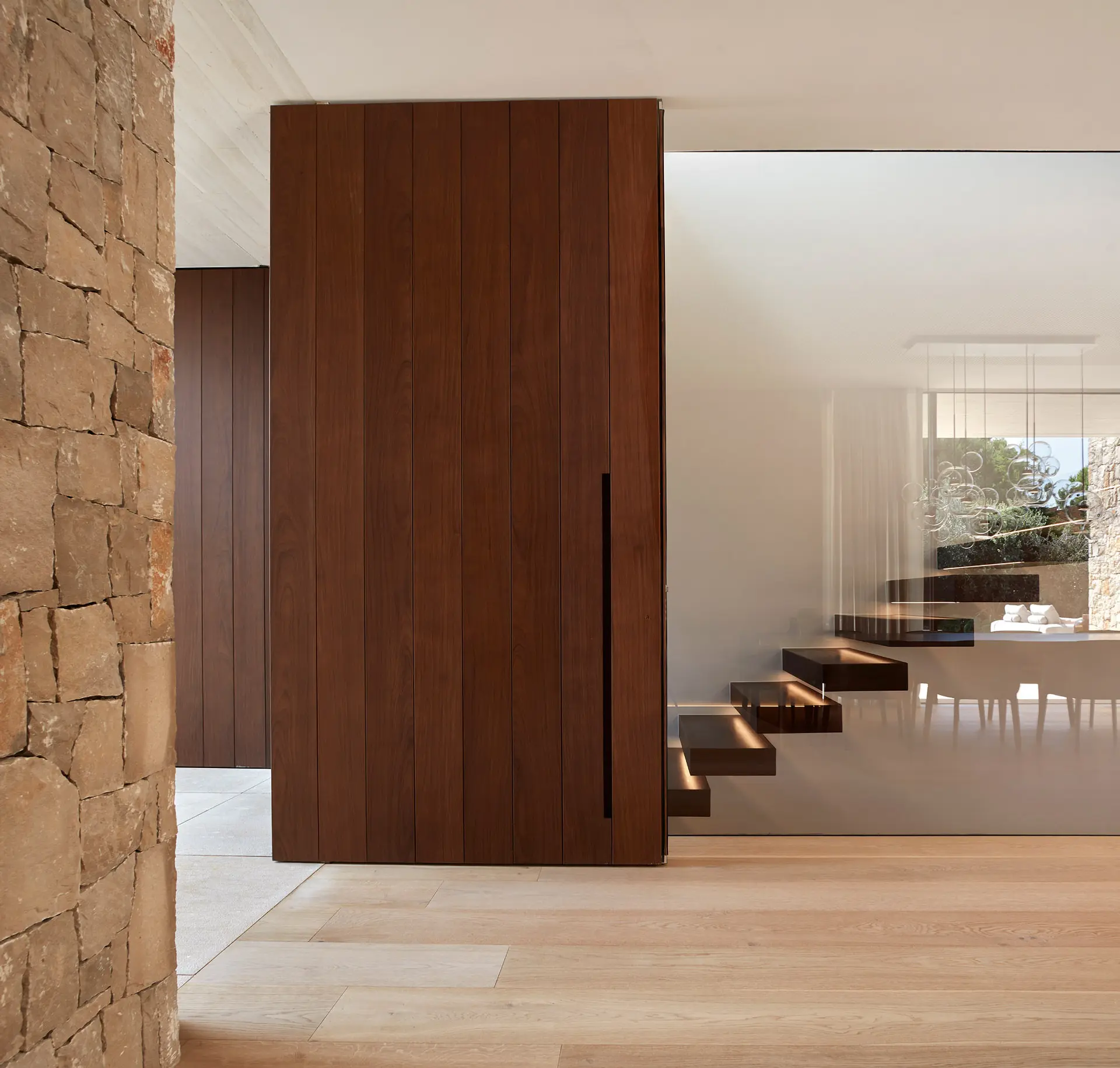
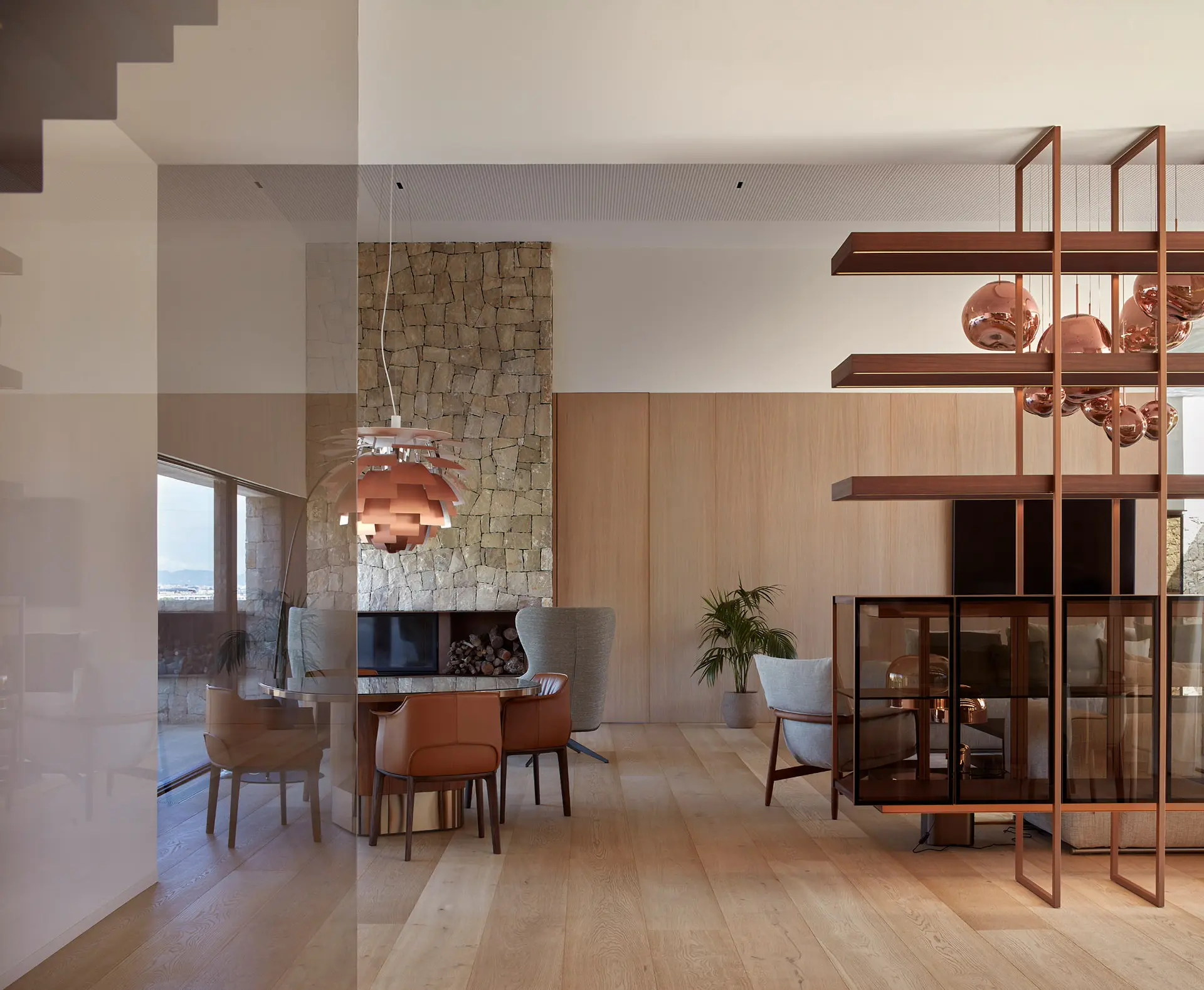
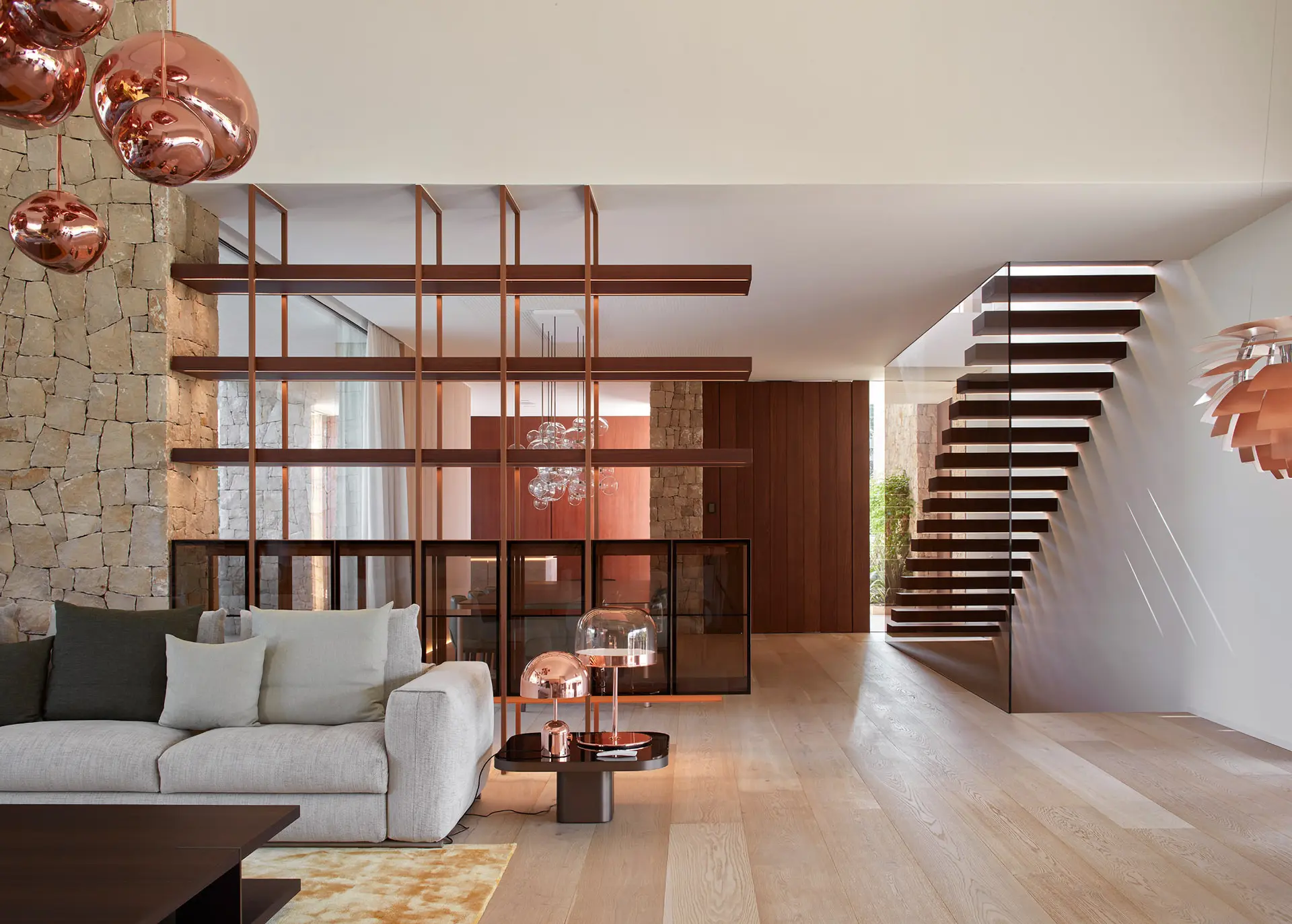
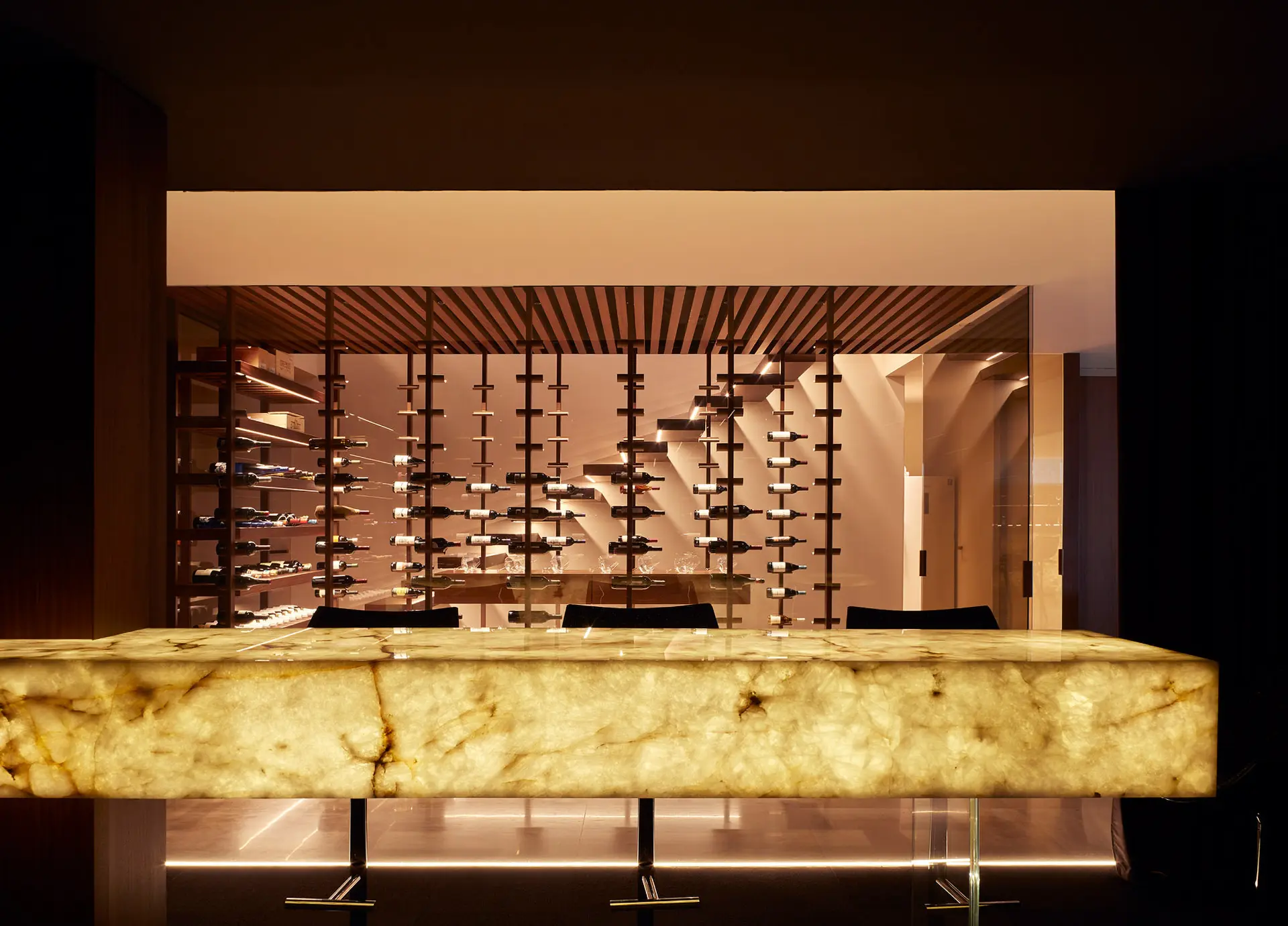
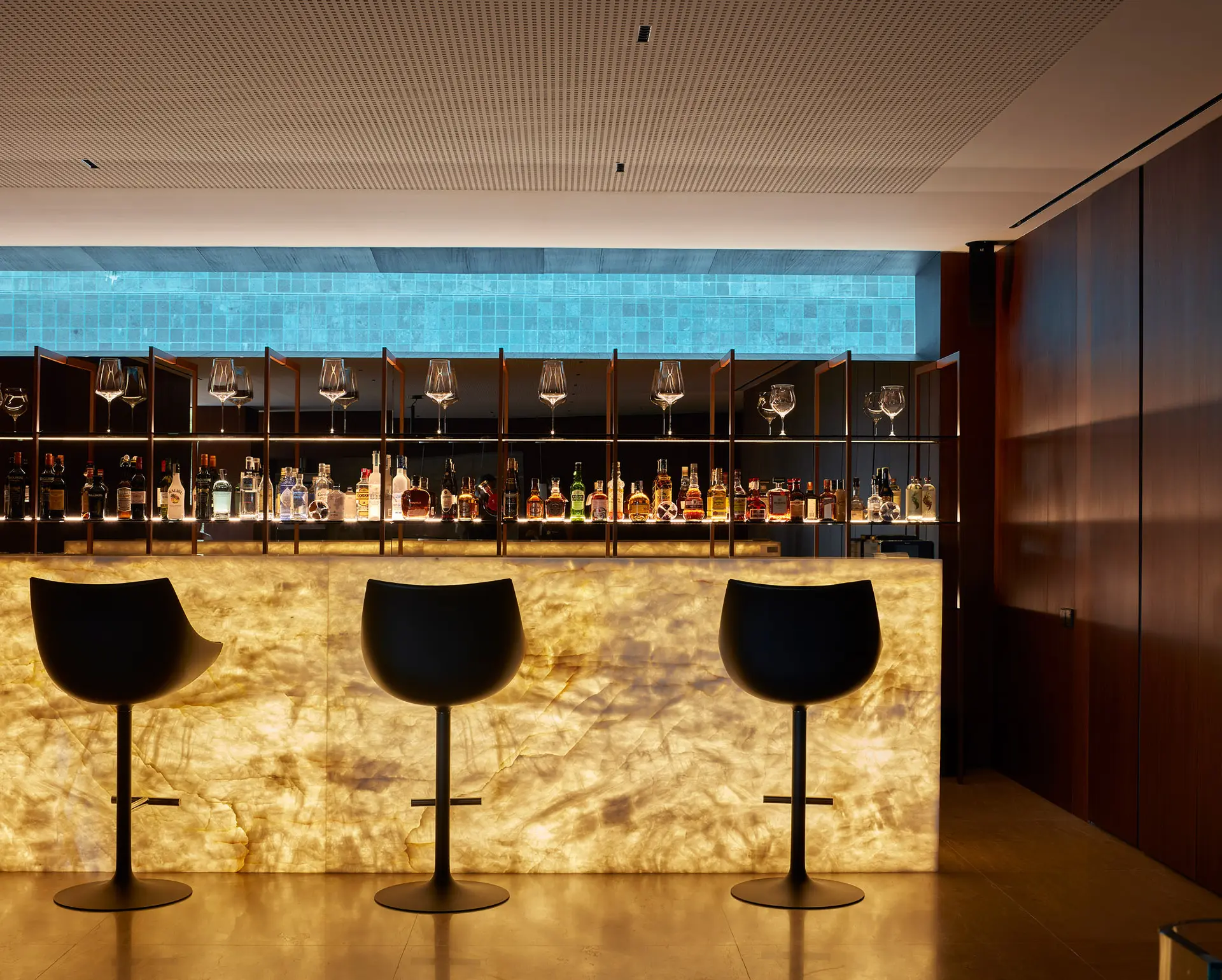
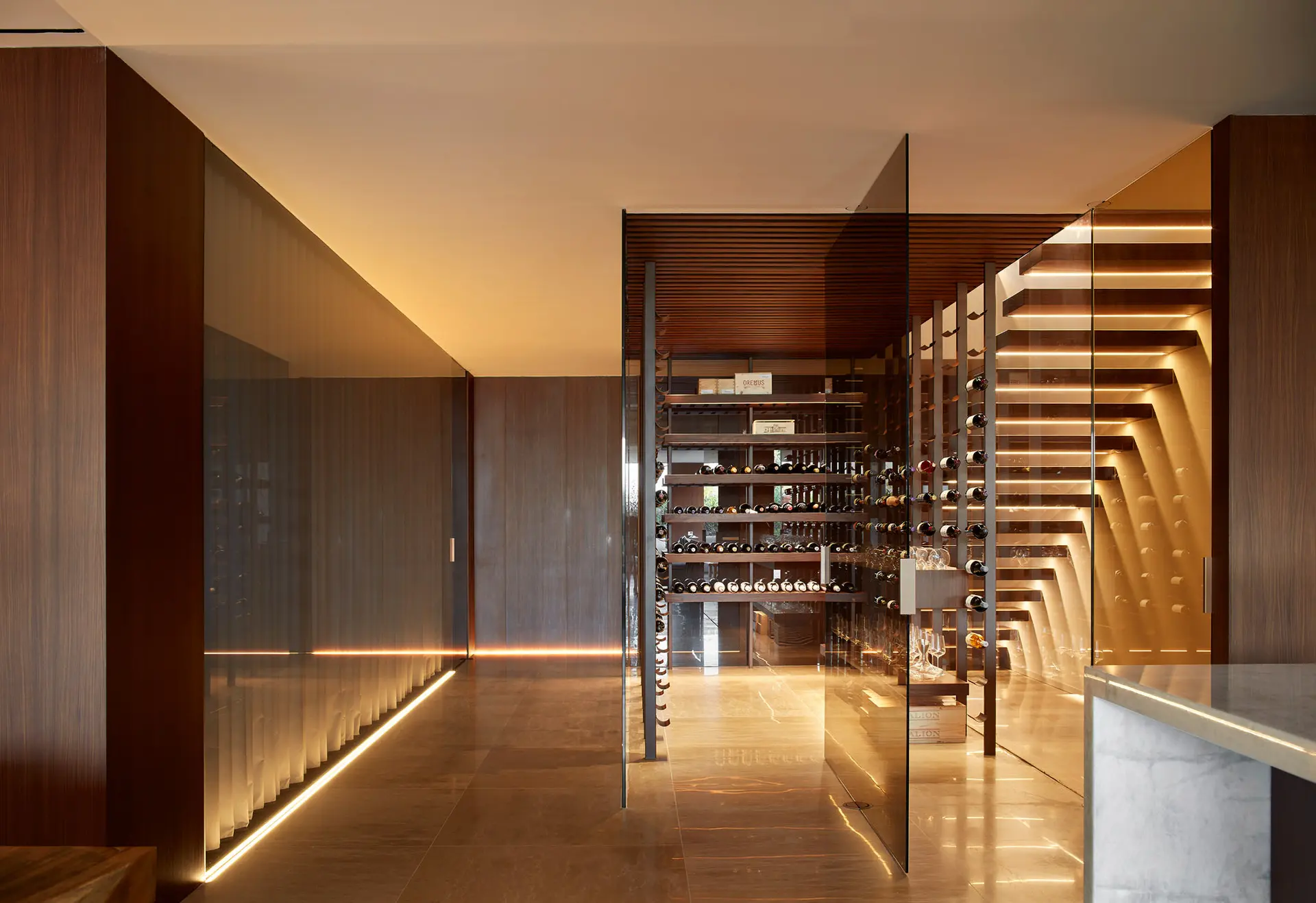
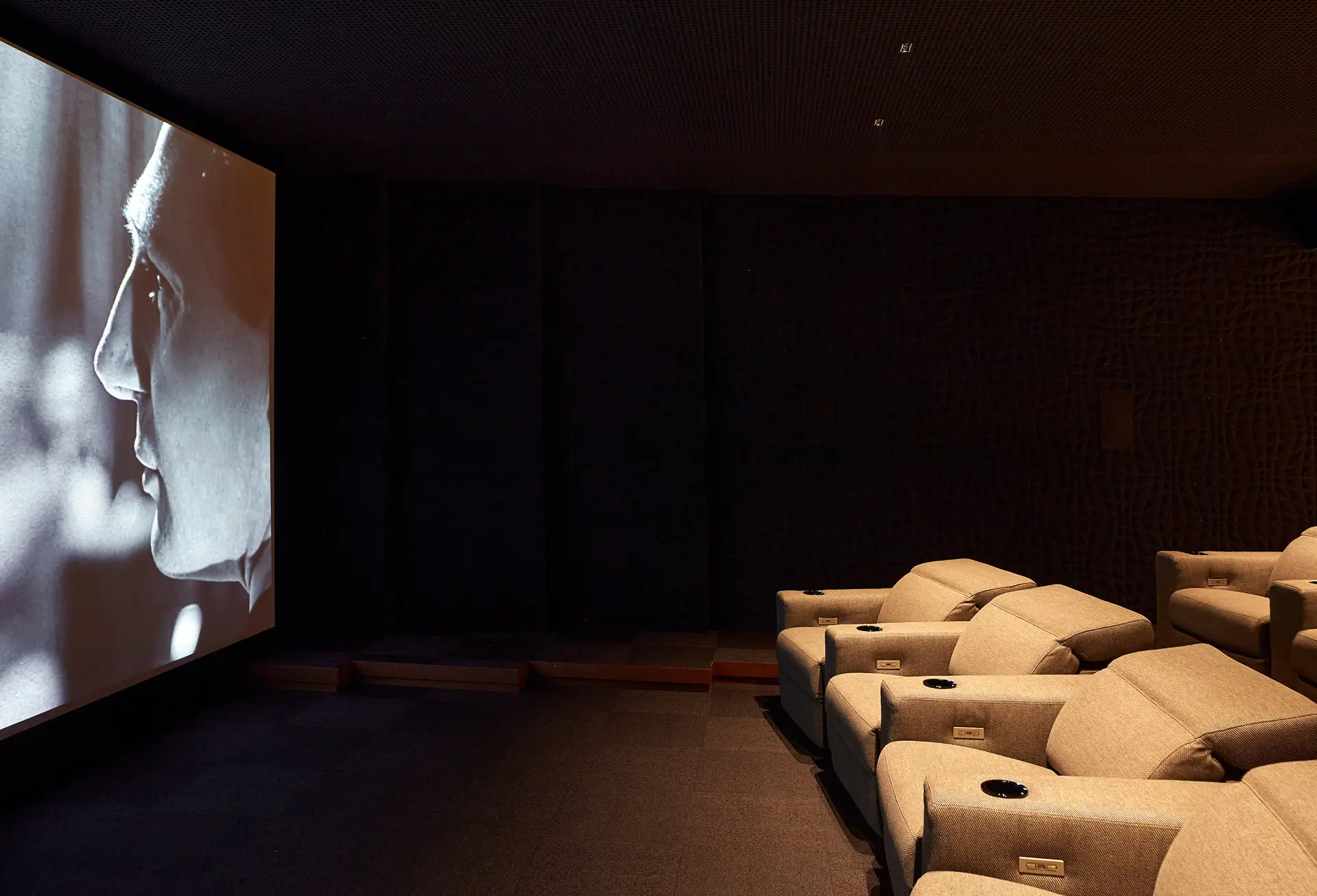
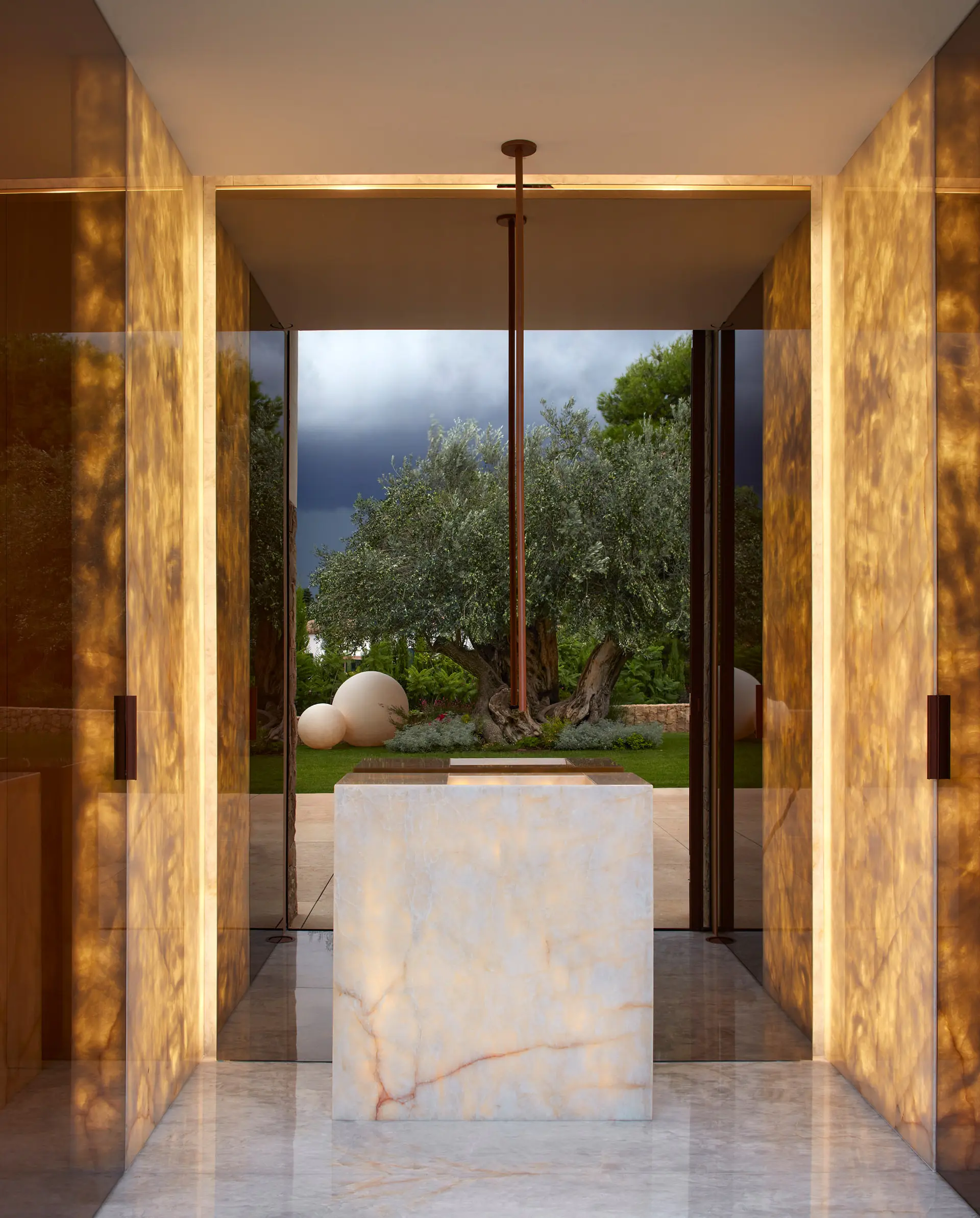
The ground floor hosts the rooms for daily use as kitchen, dining room and double-height living room, to which are attached a guests' pavilion, a cinema room and an indoor pool. The bedrooms and the lookout, dedicated to studio area, are hosted by the first floor.
"The stone plinth is topped by a white concrete trim, casted in such a way that the two materials form an expressive, complementary set that provides the house with a strong tectonic carácter."
Ramón Esteve.
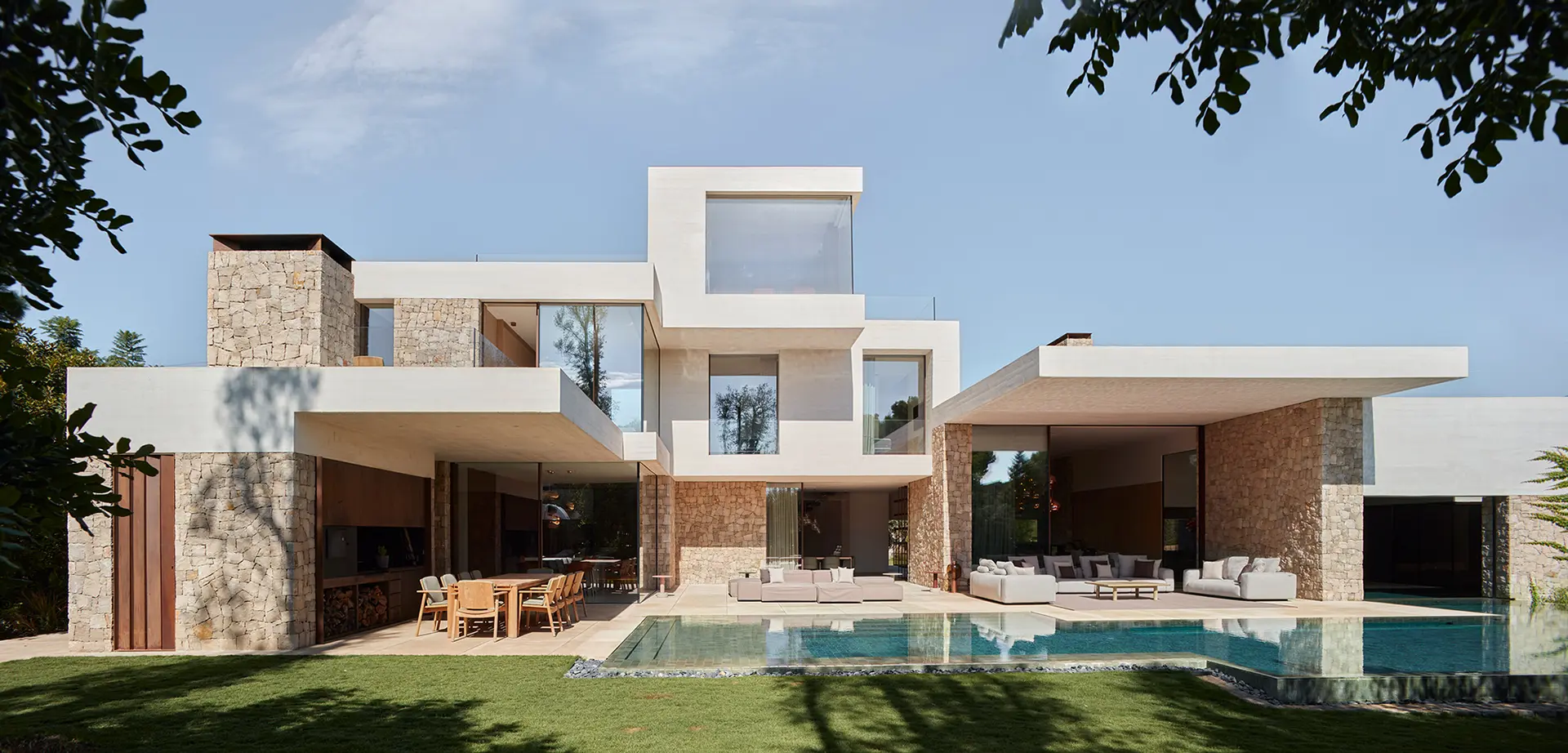
Architect
Ramón Esteve
Project Team
Estefanía Pérez
Jacobo Mompó
María Parra
Anna Boscà
Building Engineers
Emilio Pérez
Carolina Tarazona
Visuals
Tudi Soriano
Landscaping
GM Paisajistas
External Collaborators
Índigo Ingeniería
Prodein Ingeniería
IMG Windows
Carpintería Palmer
Photography
Mariela Apolonio
Video
Alfonso Calza

